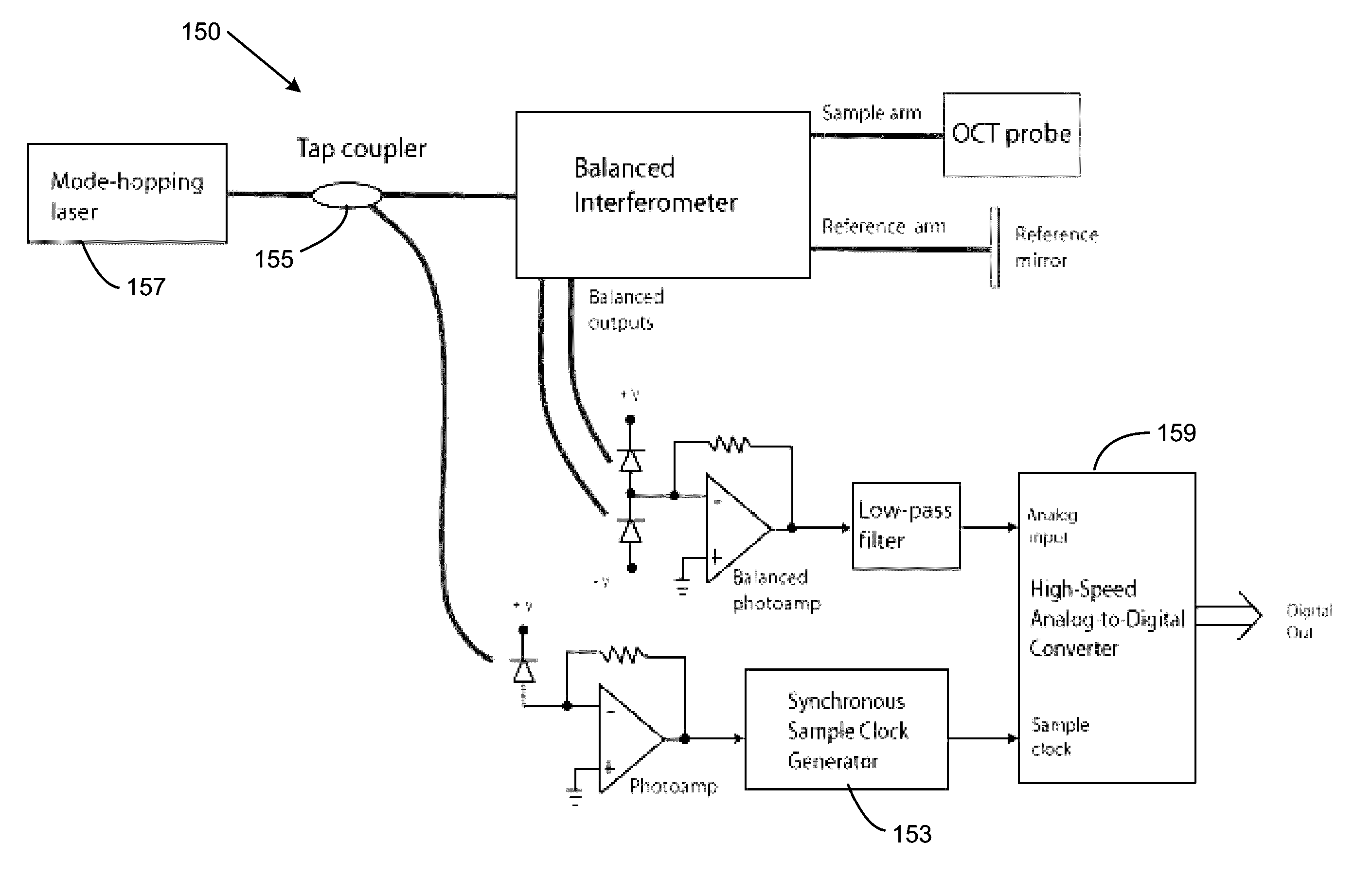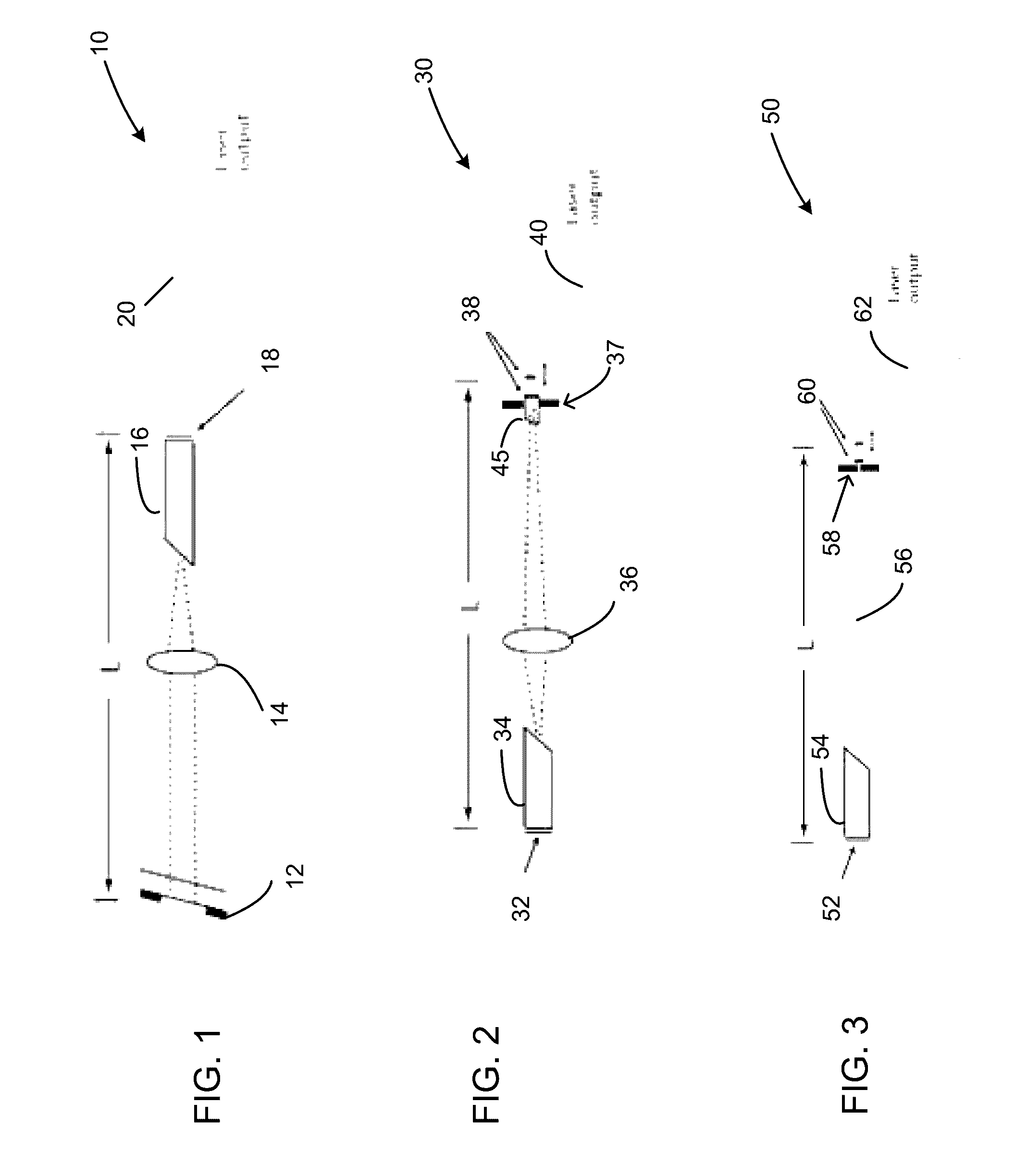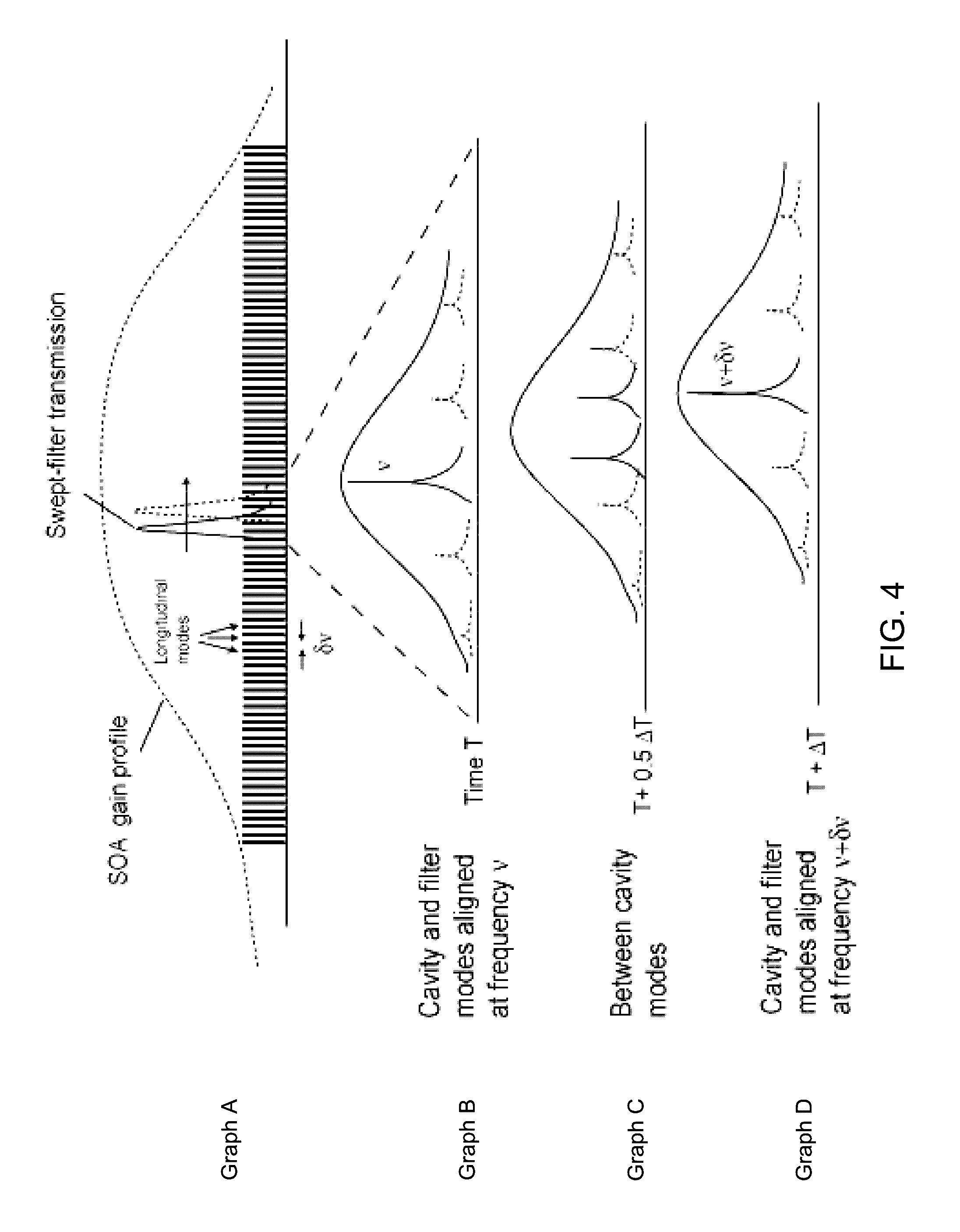Swept mode-hopping laser system, methods, and devices for frequency-domain optical coherence tomography
a laser system and frequency-domain technology, applied in lasers, laser details, instruments, etc., can solve the problems of tunable long-cavity lasers, lasers suffer from severe trade-off between scanning speed and coherence length, and tunable long-cavity lasers also tend to be bulky, etc., to achieve short intensity fluctuations, high repetition rates, and fast sweep speeds
- Summary
- Abstract
- Description
- Claims
- Application Information
AI Technical Summary
Benefits of technology
Problems solved by technology
Method used
Image
Examples
embodiment 10
[0051]With respect to FIG. 1, the laser embodiment 10 shown includes a SOA 16, with one partially reflecting facet 18, and a etalon 12. In one embodiment, the etalon 12 is a tunable reflection-mode Fabry-Perot etalon. A lens 14 is also disposed in the cavity. The length of the laser cavity L is set by the distance between the partially reflecting surface 18 of the SOA and one surface of the etalon 12. A tapered fiber 20 couples the light out of the partially reflecting facet 18 of the SOA. In one embodiment, this laser 10 only includes a single lens 14. As a result, the cavity length L can be reduced relative to a cavity with additional lenses or other elements disposed therein. In addition, this design makes alignment easier, and reduces the internal reflections from the surfaces of the lens. In one embodiment, L ranges from about 0.5 to about 2 cm.
embodiment 30
[0052]Another embodiment of a short-cavity laser 30, shown in FIG. 2, includes a SOA 34, with one reflecting facet 32, and an etalon 37. In one embodiment, the etalon 37 operates in the transmission mode. The etalon can be a tunable fiber-optic Fabry-Perot etalon. A lens 36 is disposed in the cavity. An optical fiber 40 is also optically in communication with SOA 34. The length of the laser cavity L is set by the distance between the partially reflecting surface 32 of the SOA and the reflective coating 38 on the tip of the optical fiber 40 that forms one surface of the etalon. One advantage of this laser embodiment 30 is that it includes a tunable etalon 37, which is based on a piezo-actuated optical fiber 45 instead of a pair of electrostatically actuated plates. With respect FIG. 2, in one embodiment, L also ranges from about 0.5 to about 2 cm.
[0053]Similar to the embodiment of FIG. 1, only one lens 36 is used. This follows because the optical fiber 40 also couples light out of th...
PUM
 Login to View More
Login to View More Abstract
Description
Claims
Application Information
 Login to View More
Login to View More - R&D
- Intellectual Property
- Life Sciences
- Materials
- Tech Scout
- Unparalleled Data Quality
- Higher Quality Content
- 60% Fewer Hallucinations
Browse by: Latest US Patents, China's latest patents, Technical Efficacy Thesaurus, Application Domain, Technology Topic, Popular Technical Reports.
© 2025 PatSnap. All rights reserved.Legal|Privacy policy|Modern Slavery Act Transparency Statement|Sitemap|About US| Contact US: help@patsnap.com



